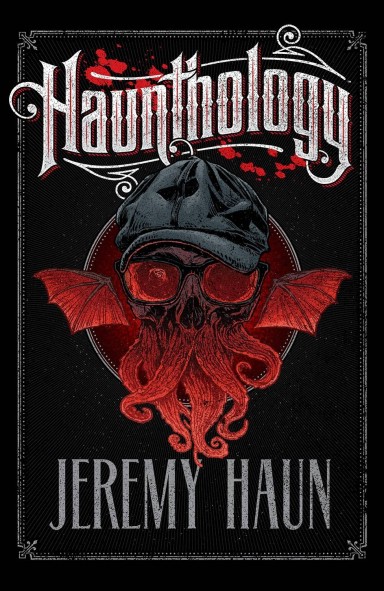On Jeremy Haun's uniquely-paced horror comics

Hello! I'm newslettering again. And this time, I have some thoughts on a project that appeals to my fondness for both compelling comics and smart horror — Jeremy Haun's Haunthology.
One quick note: I backed this book on Kickstarter, and am basing this review on the version that appeared there; I’m not sure if it’s substantially different from the version Image Comics released in May, though it doesn’t seem to be. Anyway, on with the review.
*
The first thing that caught my eye after opening Jeremy Haun’s Haunthology was the list of blurbs. About half of them came from comics creators I admire (Declan Shalvey! James Tynion IV!), while the other half came from horror writers whose work I dig (Laird Barron! John Langan!). Throw in an introduction by Nathan Ballingrud and you have something tailor-made to pique my interest.
Haun contributes a preface here as well, where he writes about the realization that he could “creep myself out with the things I write.” And, look, I’m all about telling the stories you want to read — and so the idea of telling stories to unnerve the teller is inherently appealing. What creeps Haun out might not creep me out — and vice versa — but it’s likely to be a lot more personal than something more generic. And it’s no spoiler to say that a lot of these stories did, in fact, creep me out.

There are three qualities to many of the stories in here that make them especially memorable. The first of these is best explained by Ballingrud in his introduction, where he writes that Haun pares his stories down to “the sweet moment of frisson that which is the true reward of a horror story: the spike of fear, the eerie shift from one truth to another, the dreadful revelation.” I don’t know if these would all work as prose, but in this medium, they click remarkably well — “The Importance of Making Lists,” for instance, relies neatly on the juxtaposition between what the narrator is saying and what’s actually being illustrated. As for what’s being illustrated, it’s a relatively mundane task — but the timing over the course of nine panels makes the punchline hit with plenty of dread.
The second quality is that Haun has a good sense of pacing. Not just pacing — but a very specific sense of how to juxtapose narration and images. Many of these stories have a first-person narrator, and the way that the stories flow from panel to panel — and the way that the narration and the images work within specific panels — makes these feel like a textbook example of graphic storytelling. The final three panels of “I’ll Sleep,” about a woman struggling with insomnia after an unspecified, possibly apocalyptic event, are perfectly paced out, synthesizing text and image to maximum effect.
In “I’ll Sleep,” Haun doesn’t stint on the small details; on the narrator’s nightstand, readers will note copies of collections by the aforementioned Messrs. Ballingrud and Barron, their cover artwork faithfully reproduced. Haun has a penchant for realism in his illustrations, which helps to ground his human (and, in one case, feline) characters. But it also makes the moments in these stories where something uncanny appears that much more effective. The quotidian routines that make up most of “The Monday After Monday,” of a father waking up, greeting his son, and cooking a meal, are meticulously depicted — and when something alien enters the story at its conclusion, it’s far more effective than it would have been had Haun used a more surreal style from the outset.
In his introduction, Haun describes this book as a product of the pandemic, and that sense of pervasive anxiety runs throughout the book. It’s also an indication that Haun is more than up to the challenge that many artists must reckon with: turning the mood of their times into a concrete text, and making it resonate far outside the circumstances that birthed it.
*
Postcards From Komiksoj is a semi-regular newsletter about comics and storytelling by Tobias Carroll. Thanks for reading.